Never crave naughty foods again (here’s how)
 You wake up each morning with every intention of eating “good” today.
You wake up each morning with every intention of eating “good” today.
You’ll skip the drive thru line on your way to work then you’ll refuse to get fast food with co-workers at lunch. You’ll boycott the vending machine in the mid-afternoon and you won’t even think about having dessert after dinner.
But then your cravings kick in…
Your friend drops by with a big fluffy muffin and a latte for breakfast. A group of co-workers invite you to that greasy spoon down the street for lunch. Cake is passed around at the mid-afternoon staff meeting. And after dinner your honey surprises you with a bowl of your favorite ice cream.
You tell yourself that tomorrow will be different.
Tomorrow you won’t give in to food cravings.
But then tomorrow comes with its own special circumstances, and cravings get the best of you once again.
Why Do Food Cravings Always Win?
Let’s face it, we live in a world where food temptations are everywhere…which leads to cravings, which leads to eating things that you shouldn’t, until it leads to pounds gained. Again. And again. And again. Until you’re so fed up with your body that you don’t even know where to begin to get yourself back on track.
 Stores display the most tantalizing junk food items right where you could easily reach them. TV commercials for greasy, fattening foods portray them so scrumptiously that you literally salivate. Sugary snack items have full-page, glossy pictures in your favorite magazines. And as if all of these weren’t enough, the people in your daily life are another (constant) source of food temptation.
Stores display the most tantalizing junk food items right where you could easily reach them. TV commercials for greasy, fattening foods portray them so scrumptiously that you literally salivate. Sugary snack items have full-page, glossy pictures in your favorite magazines. And as if all of these weren’t enough, the people in your daily life are another (constant) source of food temptation.
To make matters worse, you’ve been conditioned since childhood to have a positive association with the act of indulging in your cravings. So you use food as a reward. You use food as a source of emotional comfort. You use food as a way to relieve stress. And quickly these associations and uses of food become habit. Thus, a habit that’s not easily broken.
New Technique to End Food Cravings
Food cravings don’t need to have the upper hand on you anymore. So here’s how you can fight back using your most powerful asset: your brain.
Remember that your mind is an amazing thing. Once your mind is made up about something it’s nearly impossible to change it.
Try This Powerful Mind Exercise: Imagine that you are once peacefully floating down a river on a raft. The sun is shining, birds are chirping, and you are having a fun, relaxing time. You feel wonderful about the river because it’s making you feel happy.
Now change perspectives for a moment. You are now in a plane flying over the river and the raft. Instantly our eye is drawn to an enormous rocky waterfall. Then you look back to the person floating on the raft, having a wonderful time, headed straight for the treacherous falls.
With this new perspective of the river, do you think that you’d agree to get on a raft and take your chances floating toward the falls? Laughable, right? You’ve seen the hidden danger of the river. You know it leads to pain and suffering.
Now your negative association (watery death) with the river has replaced your initial positive association (relaxing fun).
This is the key to overcoming food temptations and putting an end to food cravings: building negative associations in place of existing positive ones. I’ll also break this process down for you in two steps:
Step One: Create a STRONG Negative Association with Unhealthy Food
You may not have realized it, but up until this point you’ve placed unhealthy, fattening foods on a pedestal in your mind. As long as the wrong foods are on that pedestal you’ll continue to give into your cravings and will continue to gain fat.
Take the wrong food off that pedestal by listing off everything negative about them…
These foods make you unhealthy.
These foods cause weight gain.
These foods drain your energy.
These foods kill your confidence.
These foods lessen your quality of life.
These foods damage your love life.
Every time that you feel tempted to eat an unhealthy food, focus on your list of negatives. Kick the junk off the pedestal and put something healthy in its place.
Step Two: Create a STRONG Positive Association with Wholesome Foods
Now that your mental food pedestal has been cleared, put truly wholesome food items on it. Juicy fresh fruit, crispy vegetables and savory lean meats are the place to start.
List off the things that you love about healthy food…
These foods make you healthy.
These foods promote fat loss.
These foods boost your energy.
These foods build your confidence.
These foods improve your quality of life.
These foods enhance your love life.
I encourage you to immerse yourself into the world of healthy, wholesome foods. Browse the aisles of your local natural foods store. Stroll through a farmer’s market. Pack healthy snacks to bring to work. Clear your kitchen of junk.
Use the technique above consistently and you will soon find that healthy, wholesome foods are your favorite. And craving the wrong foods will be a thing of your past.
So call or email me today and I’ll get you started on a fitness program that will change your life and your body forever!
Focus on the New Additions
So you’ve decided to ditch your old eating habits and to embrace a new diet of lean proteins and lots of veggies. You surely know that your new eating strategy will lead to many pounds lost…but you can’t get your old favorite foods out of your mind.
Watch out!
When you spend time dwelling on the burgers and pizzas that you loved, you’re surely setting yourself up for a relapse.
Thus, the best way to stick with your new healthy eating habits is to focus on all the new foods that you now enjoy. And so, get a new cookbook or visit websites that present new and tasty ways for preparing healthy food.
Find new favorite foods to love-foods that are certainly healthy and guilt free.
White Bean Hummus
Use this white bean hummus instead of creamy dressings or cheese in your sandwich. Since hummus is filled with healthy protein and fiber.
Servings: 8
Here’s what you need…
2 cans white beans, drained and rinsed

1 small onion, chopped
3 cloves garlic, minced
1/2 cup whole wheat bread crumbs
1 Tablespoon Dijon mustard
Juice of 1 lemon
1 teaspoon olive oil
1/2 teaspoon dried basil
1/2 teaspoon dried thyme
dash of salt
Throw everything into the food processor then blend until smooth and creamy.
Then spread onto bread or use as a dip for cut veggies.
Nutritional Analysis: One serving equals: 124 calories, 1.6g fat, 20g carbohydrate, 5.5g fiber, and 7g protein.
Check out this link to find the 2 healthiest sweeteners to replace sugar and aspartame: https://www.healthambition.com/healthiest-sweeteners/



 This extreme interest in health and nutrition is, unfortunately, fueled by false advertisement. The Internet, television, and product labels make claims not backed by science, fooling millions and reaping a sizable paycheck. Furthermore, in America, Food and Drug Administration regulates supplements the same way that foods are, not as if they are medications. Thus, supplement manufacturers aren’t required to back their claims by science.
This extreme interest in health and nutrition is, unfortunately, fueled by false advertisement. The Internet, television, and product labels make claims not backed by science, fooling millions and reaping a sizable paycheck. Furthermore, in America, Food and Drug Administration regulates supplements the same way that foods are, not as if they are medications. Thus, supplement manufacturers aren’t required to back their claims by science.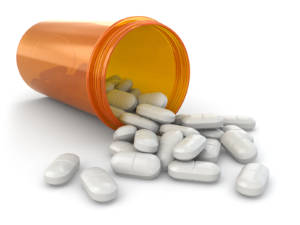 If vitamins, minerals, botanicals, and herbs are good for you and available over the counter, they must be safe to take in high doses, right? Science has proven otherwise. You feel a cold coming on so you pop the vitamin C pills and lozenges to ward it off, but too much of certain vitamins and minerals can be dangerous. For example, when you overdose on vitamin C, your body loses its ability to absorb copper; too much phosphorous and your body can’t absorb enough calcium; vitamins A, D, and K can build up to toxic levels when large doses are taken; too much vitamin A will put you at risk for osteoporosis; vitamin E may increase your risk of stroke; and iron your risk of heart disease. And you thought those supplements came with no risks.
If vitamins, minerals, botanicals, and herbs are good for you and available over the counter, they must be safe to take in high doses, right? Science has proven otherwise. You feel a cold coming on so you pop the vitamin C pills and lozenges to ward it off, but too much of certain vitamins and minerals can be dangerous. For example, when you overdose on vitamin C, your body loses its ability to absorb copper; too much phosphorous and your body can’t absorb enough calcium; vitamins A, D, and K can build up to toxic levels when large doses are taken; too much vitamin A will put you at risk for osteoporosis; vitamin E may increase your risk of stroke; and iron your risk of heart disease. And you thought those supplements came with no risks.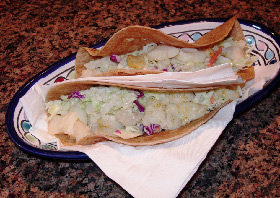 1 pound Fresh Skinless Cod
1 pound Fresh Skinless Cod
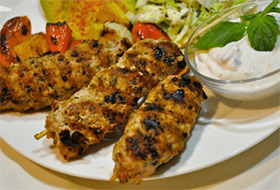 Here’s a great recipe for a busy weeknight dinner. Ground turkey breast is mixed Mediterranean spices to create flavorful, protein-packed kebabs. Serve with salad and vegetables and a side of plain Greek yogurt.
Here’s a great recipe for a busy weeknight dinner. Ground turkey breast is mixed Mediterranean spices to create flavorful, protein-packed kebabs. Serve with salad and vegetables and a side of plain Greek yogurt.

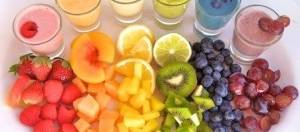
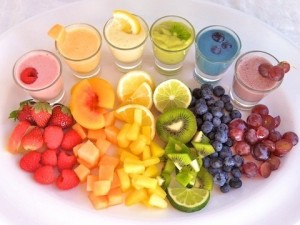




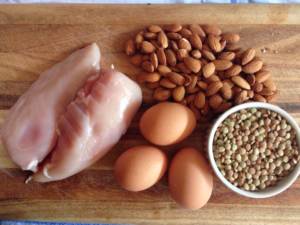 If you are trying to lose weight or get back into shape, you’ve probably heard a lot of talk about proteins. The fact is, proteins are an essential part of any diet and knowing more about them will help any weight loss, muscle building, or recovery effort.
If you are trying to lose weight or get back into shape, you’ve probably heard a lot of talk about proteins. The fact is, proteins are an essential part of any diet and knowing more about them will help any weight loss, muscle building, or recovery effort.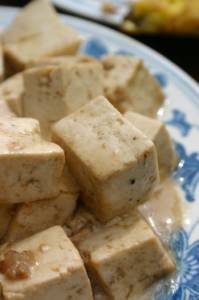 The typical
The typical

 YES! Contact me today to schedule a FREE no obligation consultation and trial workout.
YES! Contact me today to schedule a FREE no obligation consultation and trial workout.